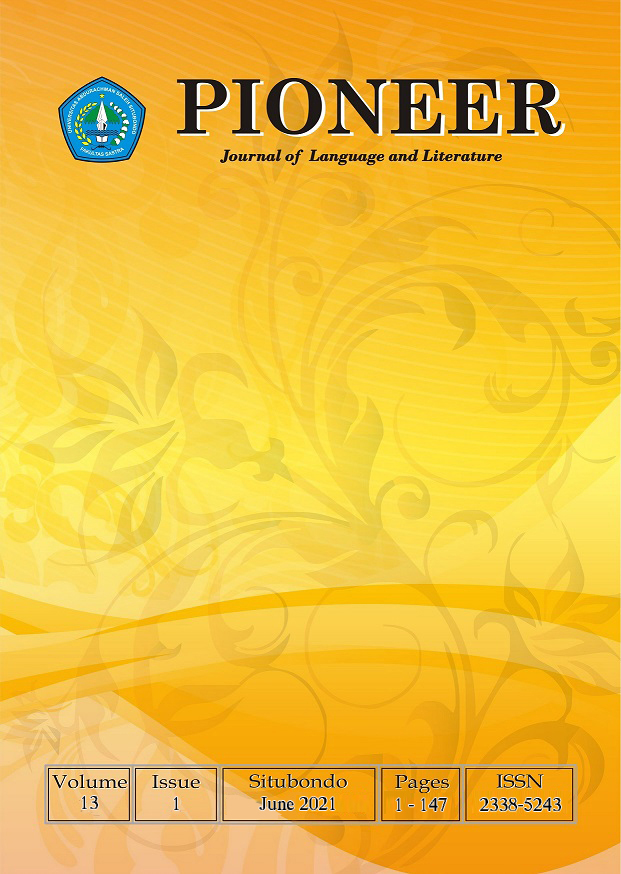Bright English Textbook Development for Primary School Grade 6 in Batu City
Abstract
Based on Indonesia’s current curriculum, English is no longer compulsory for primary school subject; it is only required to be taught starting at the secondary school level. However, in Batu city, the local government treats English as compulsory local content subject for their area development, which certainly raises several challenges for English teachers in Batu due to the lack of supplementary books and other supporting activities. Since 2019, the supplementary book writing project has been initiated, however, the draft still needs to be evaluated before being published, and this is the focus of this project. The study was projected to describe the development process of the Bright English textbook. This study employed a descriptive-analytical approach, involving primary school teachers, students, and an expert. Questionnaires were distributed to teachers and students to evaluate the overall display and content of the book, whereas an evaluation sheet was delivered to the expert to rate the language level and content. Adapting Richards (2001)’s material development theory, three stages of development were present; training, implementation, and evaluation-publication. The training stage facilitated teachers to better comprehend the textbook structures and varied activities relevant to Batu's wisdom and values, while the implementation stage encouraged more interactive and fun collaborative learning plans through synchronous offline and online meetings. The evaluation and publication phase perfected the textbook in various aspects such as its layout, font style selection, picture, instructions, number of pages, language mechanics, uniformity of graphic design, and placement inconsistency.
Downloads
References
Ary, Donald, et al. (2010). Introduction to Research in Education (8th ed). California: Wadsworth.
Cunningsworth, A. (2015). Choosing Your Coursebook. Oxford: Macmillan Publishers Limited.
Dharma, Y. P., Aristo, Thomas J. V., (2018). An Analysis of English Textbook Relevance to the 2013 English Curriculum. Journal of English Educational Study. 1(1), May 2018.
Fredericksen, J.R. and Collins, A. (2012). “A systems approach to educational testingâ€. Educational Researcher,
Hosskison, K and Tompkins, E. Gail. (1991). Language Art: Content and Teaching Strategy. Maxwell Macmillan International Publishing Group. New York.
Kodriyah, L.., Dayu, A. T., Hakim, A. R.. (2018). ELT Textbook Pros and Cons in EFL Environment: How Teachers Should Make A Decision. Intensive Journal, 1(1).
Maili, S. N. (2018). Bahasa Inggris pada sekolah dasar: Mengapa perlu dan mengapa dipersoalkan. JUDIKA (Jurnal Pendidikan Unsika), 6(1), 23-28.
McShine, J. (2013). Cognitive development: An information processing approach. Cambridge: Basil Blackwell.
Muslaini, F.., Kristina, D., Ngadiso. (2018). A Call Barriers in Implementation of Education Regulation: The LatestEnglsih Textbook as Main Instructional Media in Schools in Indonesia. International Journal of Multicultural and Multireligious Understanding. 5(4), August 2018.
Inayati, N., Abidasari, E., Sabgini, K.N.W. (2019). The writing and supervision of Bright English textbook development for primary school teachers in Indonesian context. Englisia the Journal of Language, Education and Humanities. 7(1), 53-68. DOI: http://dx.doi.org/10.22373/ej.v7i1.5592
O'Neill, R. (2012). Why Use Textbooks? ELT Journal Vol. 36/2.
Poedjiastutie, D., Akhyar, F., Hidayati, D., & Gasmi, F. N. (2018). Does curriculum help students to develop their English competence? A case in Indonesia. AWEJ (Arab World English Journal), 9(2), 175-185.
Purwani, Ari., Rochsantiningsih, Dewi., Kristina, Diah. (2017). A Content Analysis of Bright 1: A 2013 Curriculum-Based Textbook for VII Grade Students. Advances in Social Science, Education and Humanities Research (ASSEHR). 158(1). ICTTE 2017
Rahmawati, L. (2018). A Content Analysis of The English Textbook “Primary English as a Second Languageâ€. Unpublished Thesis. SunanAmpel State Islamic University.
Sofiana, N., Mubarok, H., & Yuliasri, I. (2019). English language teaching in secondary schools: An analysis of the implementation of Indonesian ELT 2013 Curriculum. International Journal of Instruction, 12(1), 1533-1544.
Syahmadi, H. (2013). Bedah Curriculum 2013 bagi guru BahasaInggris. Bandung: CV. Adoya Mitra Sejahtera.
Tomlinson, B. (2011). Materials development in Carter, R & Nunan, D. (Eds.) The Cambridge Guide to Teaching English to Speakers of Other Languages. Cambridge: Cambridge University Press.
Wen-Cheng, W., Chien-Hung, L., Chung, L. C. (2011). Thinking of the Textbook in the ESL/ EFL Classroom.Canadian Center of Sciennce and Education. 4(2). June 2011.
An author who publishes in Pioneer: Journal of Language and Literature agrees to the following terms:
- Author retains the copyright and grants the journal the right of first publication of the work simultaneously licensed under the Creative Commons Attribution-ShareAlike 4.0 License that allows others to share the work with an acknowledgement of the work's authorship and initial publication in this journal
- Author is able to enter into separate, additional contractual arrangements for the non-exclusive distribution of the journal's published version of the work (e.g., post it to an institutional repository or publish it in a book) with the acknowledgement of its initial publication in this journal.
- Author is permitted and encouraged to post his/her work online (e.g., in institutional repositories or on their website) prior to and during the submission process, as it can lead to productive exchanges, as well as earlier and greater citation of the published work (See The Effect of Open Access).

























